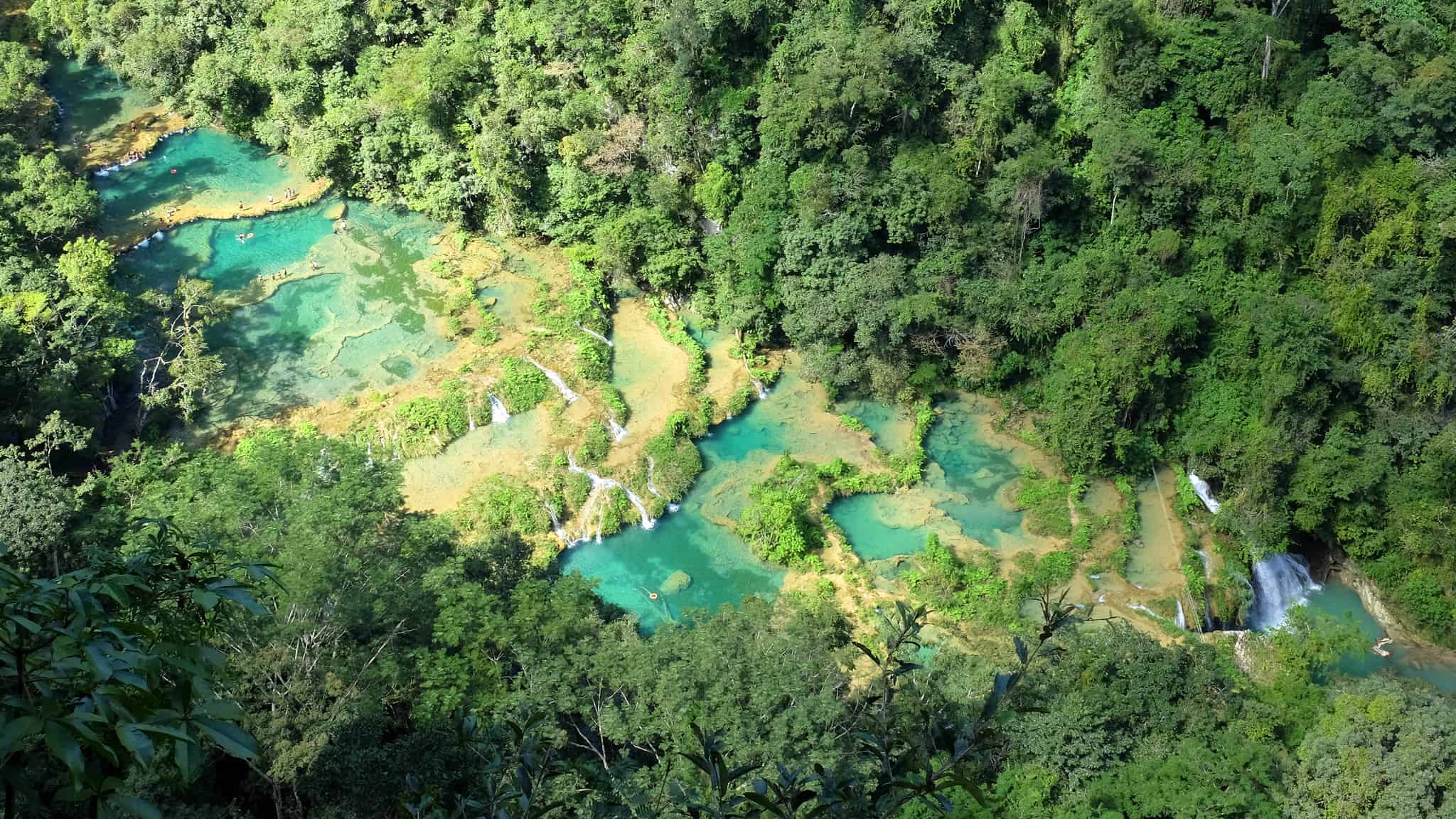Although it is impossible to go back in time, there are still a few countries left in the world that can evoke the feeling of a different era and its simpler times. Guatemala, like many countries in Central America still holds on to the cultural identity and traditions that made the county, and its people, who they are today. Guatemala is not without modern touches, but its quaint towns weave ancient tradition with modern technology as seamlessly as the country's many Mayan ruins weave within the lush tropical jungles.
Antigua
 https://www.flickr.com/photos/mytravelphotos/
https://www.flickr.com/photos/mytravelphotos/
Although Spanish conquistadors were responsible for a number of horrible atrocities in Central America, they did have a knack when it came to city planning. Antigua was built by the Spanish to be the capital of Guatemala. This colonial gem remained so until 1773 when residents were forced to evacuate after a devastating earthquake. Although abandoned, Antigua was neither destroyed nor forgotten. The people came back and today, it remains one of the most fabulously preserved colonial cities in the country. The cobblestone streets, ancient basilicas and colourful shops make Antigua a popular tourist attraction in Guatemala, often enticing visitor's to skip the county's modern capital all together due to the not just the beautiful architecture, but the affordable amenities as well.
Ruins of Tikal
 https://www.flickr.com/photos/netwalker/
https://www.flickr.com/photos/netwalker/
Out of the hundreds of Mayan ruins hidden throughout Guatemala's extensive landscape, the ruins of Tikal stand above them all as the greatest and arguably most important pieces of Mayan architecture in all of Central America. Built around 550 AD, Tikal was the capital of the Mayan world during it's time. As such, it featured the highest towering pyramids that jutted well above the verdant jungle tree-line. Even visitors who aren't as enthusiastic about Mayan temples as some backpackers, the sheer size of these massive stone temples is sure to be breath-taking, and if they aren't, the climb of several hundred steps to the top sure will be. Visitors that do survive the climb to the top will be treated to panoramic views around Tikal as well as given ample chances to spot the monkeys, pacas and beautiful birds that call the surrounding national park home.
Chichicastenango
 https://www.flickr.com/photos/scropy/
https://www.flickr.com/photos/scropy/
Chichicastenango, often shortened to "Chichi" for obvious reasons, is a town that can be as different as night and day depending when visitors head there. On most days of these week, Chichi is a rather unremarkable mountain town nestled in the highlands of Guatemala. However, every Thursday and Sunday, it seems like the entire country makes their way to this little village. Chichicastenango is most famous for its market that attracts both vendors and buyers from near and far. Although the market primarily caters to the local Mayan population, visitors are certain to find an abundance of memorable souvenirs. The particular highlight is the colourful fabrics, carved Mayan ceremonial masks and leather goods, all of which are made pain-stakingly by hand. Guatemala is famous for its hand-made textiles, made the same way as their ancestors made them for thousands of years, and there is no better town to find them than in Chichicastenango.
6 Places Saavy Travellers Have on the Radar
Semuc Champey
 https://www.flickr.com/photos/christophercrouzet/
https://www.flickr.com/photos/christophercrouzet/
For those that want to get in touch with Guatemala's extensive spiritual side, the Semuc Champey, or "sacred waters," should be their first stop. Although there are no spiritual rituals going on here today, Semuc Champey has a powerful effect on people. The site is a series of perfectly clear, turquoise-tinted pools that fill a pock-marked limestone canyon with fresh water from an underground river. Hailed as the singularly most beautiful spot in Guatemala, the tourist crowds are kept down by both a challenging drive and hike to get to the secluded area. Those who make the trek are rewarded with the natural splendor and the option to take a refreshing swim in some of the pools. However, visitors should be careful not to cross any of the rope barriers that line some of the steeper cliffs in the area. Local legend states that many have tried to explore the underground river by dipping under its protective limestone lip; those who succeeded were never seen again.
Lake Atitlan
 https://www.flickr.com/photos/tshermankb/
https://www.flickr.com/photos/tshermankb/
A trip to Lake Atitlan is one of the biggest steps back in time in Guatemala. As the deepest natural lake in Central America, Lake Atitlan is a true piece of prehistory, predating all civilization in the country. The magnificent lake is over 1,000 feet deep and surrounded by three striking volcanoes. Nothing makes the beauty surrounding the lake more clear than its name. The word Atitlan is the Mayan world for "place where the rainbow gets its colours." The shores of Lake Atitlan are surrounded by a number of small Mayan towns, each with their own unique customs, artistry and traditions. Visitors, locals and a surprisingly large community of retired expats enjoy cruising the serene lake waters in sail boats and partake in the abundant fishing in both modern and traditional fishing boats. This beautiful lake is truly the epicentre of where the past and present mingle in Guatemala.


